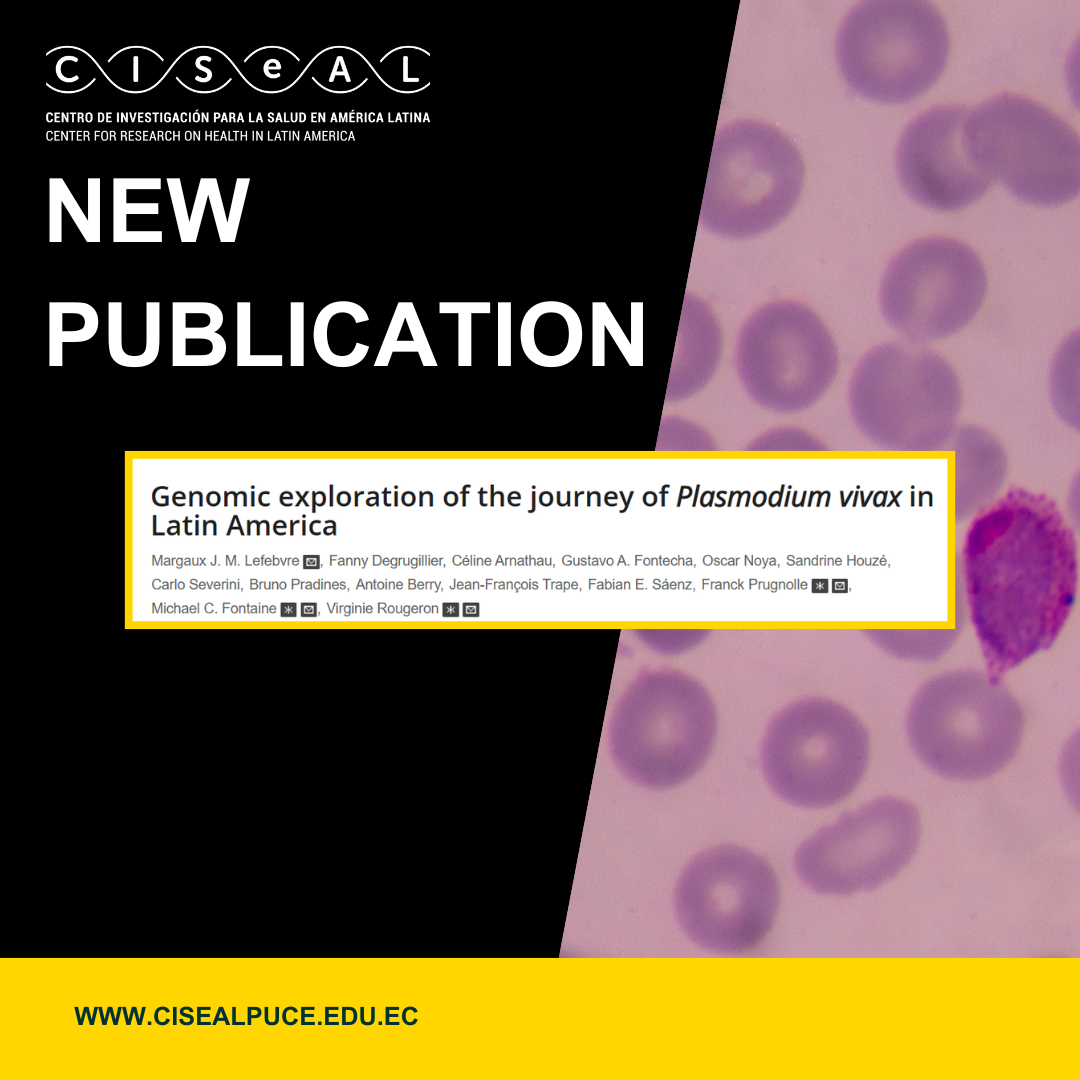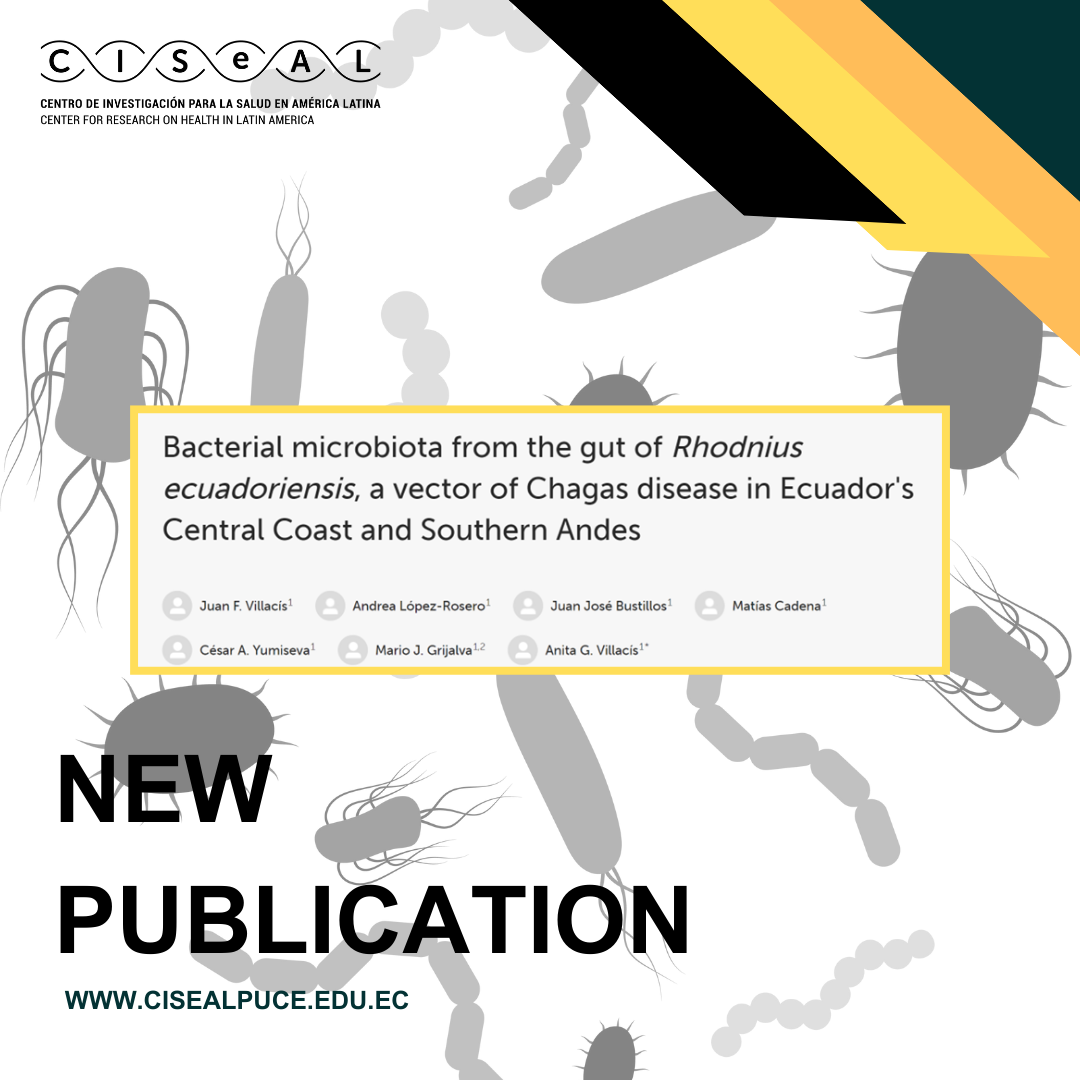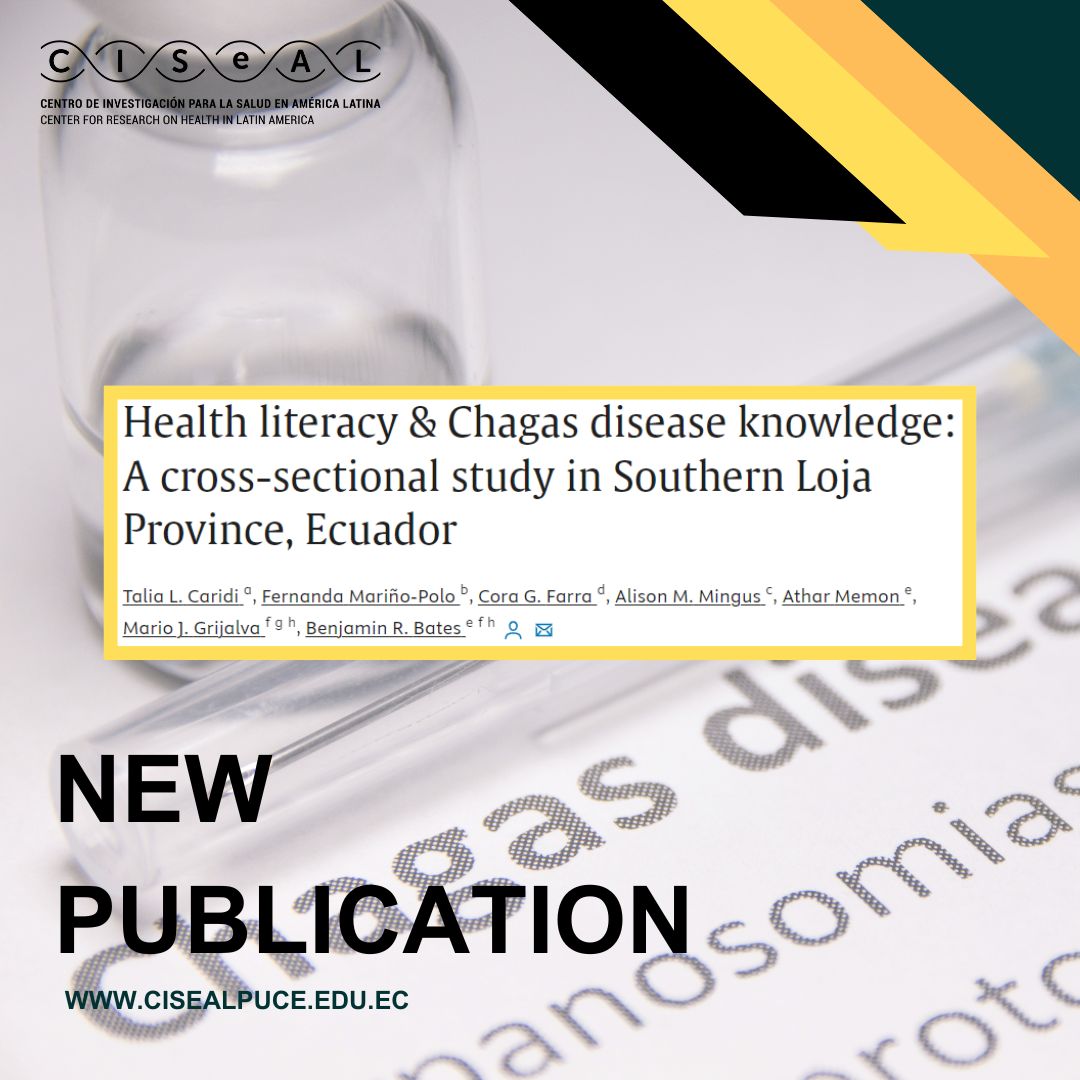
A new international study has successfully reconstructed the evolutionary history of Plasmodium vivax—the parasite responsible for the majority of malaria cases in Latin America—with high precision. Using state-of-the-art population genomics techniques, researchers analyzed 620 P. vivax genomes, including 107 new samples from West Africa, the Middle East, and Latin America. The research was coordinated by the French National Research Institute for Sustainable Development (IRD) and brought together institutions from Europe, Latin America, and Africa. CISeAL actively contributed to the study, with our principal investigator, Dr. Fabián Sáenz, participating as part of the scientific team.
The results reveal a much more complex evolutionary history than previously believed. The study found that most current P. vivax populations in Latin America derive from a now-extinct European lineage, with possible additional contributions from yet-unsampled populations, likely originating in West Africa. Furthermore, multiple waves of parasite introduction to the continent were identified: an initial one during early European contact, followed by more recent waves linked to 19th-century human migrations.

Chagas disease, caused by Trypanosoma cruzi and primarily transmitted by triatomine insects, remains a major public health issue in Central and South America. In Ecuador, where approximately 230,000 people are infected, vector species such as Rhodnius ecuadoriensis and Triatoma dimidiata play a crucial role in the disease’s transmission. However, secondary vector species, particularly those of the Panstrongylus genus, have gained greater importance due to their increasing adaptation to human environments and their high infection rates with T. cruzi. Among these, Panstrongylus chinai and Panstrongylus howardi have been reported in Ecuador, displaying distinct morphological characteristics and distribution patterns.
This study, based on the dissertation work of Álvaro Lara under the supervision of Dr. Anita Villacís and other researchers from CISeAL, such as César A. Yumiseva, Mario J. Grijalva, and in collaboration with María Laura Hernandez, a researcher from CONICET (Córdoba, Argentina), aimed to characterize the wing morphometric traits of P. chinai, P. howardi, and their experimentally obtained hybrids to assess potential environmental adaptations and inheritance patterns. Field collections were conducted in the provinces of Loja and Manabí, which represent distinct ecological conditions. Specimens were transported to CISeAL for controlled hybridization experiments and morphometric analyses.
 This study, with the participation of Dr. Betzabé Tello, principal researcher at CISeAL, highlights the importance of addressing the impact of breast milk substitute (BMS) marketing in Ecuador and its influence on infant feeding practices. Through a comprehensive analysis, numerous violations of the International Code of Marketing of Breastmilk Substitutes are evidenced, including promotional strategies targeting both mothers and health professionals. The findings highlight significant gaps in the enforcement of existing regulations, particularly in traditional (TV, radio, print) and digital (social media) media advertising, product labeling, and interactions in health and commercial establishments. It is highlighted that 91% of mothers were exposed to advertising. Promotional activities for breast milk substitutes included giving free supplies (26.09%) and gifts (21.74%) to health professionals.
This study, with the participation of Dr. Betzabé Tello, principal researcher at CISeAL, highlights the importance of addressing the impact of breast milk substitute (BMS) marketing in Ecuador and its influence on infant feeding practices. Through a comprehensive analysis, numerous violations of the International Code of Marketing of Breastmilk Substitutes are evidenced, including promotional strategies targeting both mothers and health professionals. The findings highlight significant gaps in the enforcement of existing regulations, particularly in traditional (TV, radio, print) and digital (social media) media advertising, product labeling, and interactions in health and commercial establishments. It is highlighted that 91% of mothers were exposed to advertising. Promotional activities for breast milk substitutes included giving free supplies (26.09%) and gifts (21.74%) to health professionals.
 Our CISeAL researchers Betzabé Tello, Maria J. Mendoza-Gordillo and Mario J. Grijalva along with other experts conducted a study to understand how caregivers in rural Ecuador perceive and apply child care. The importance of establishing a solid foundation in the first 1,000 days of a child's life, from conception to age two, is widely recognized as it influences their emotional, cognitive development and long-term health. The WHO's Caring and Responsive Care framework provides comprehensive guidance that includes health, nutrition, responsive care, safety, and early learning opportunities essential for children's optimal development.
Our CISeAL researchers Betzabé Tello, Maria J. Mendoza-Gordillo and Mario J. Grijalva along with other experts conducted a study to understand how caregivers in rural Ecuador perceive and apply child care. The importance of establishing a solid foundation in the first 1,000 days of a child's life, from conception to age two, is widely recognized as it influences their emotional, cognitive development and long-term health. The WHO's Caring and Responsive Care framework provides comprehensive guidance that includes health, nutrition, responsive care, safety, and early learning opportunities essential for children's optimal development.
The study investigated child care in rural communities in the provinces of Cotopaxi and Loja, where challenges such as poverty, malnutrition and limited access to basic services persist. Interviews and focus groups were conducted with caregivers, health professionals, and community leaders to explore child care practices in a culturally diverse context and in resource-limited settings.

Our researchers at CISeAL, with the notable participation of Francisco Villacís under the direction of Dr. Anita Villacís, in collaboration with experts such as Dr. César Yumiseva, Dr. Mario J. Grijalva, Juan José Bustillos, Andréa López-Rosero, and Matías Cadena, have conducted pioneering research on the bacterial microbiota found in the gut of Rhodnius ecuadoriensis, the main vector in the transmission of Chagas disease on the central coast and southern Andes of Ecuador. The recently published article, titled “Bacterial microbiota from the gut of Rhodnius ecuadoriensis, a vector of Chagas disease in Ecuador's Central Coast and Southern Andes,” represents a significant advance in understanding the relationship between the intestinal microorganisms of this insect and its role in the transmission of Trypanosoma cruzi.
The study used next-generation sequencing techniques to analyze the bacteria present in the gut of this insect. Our researchers identified bacterial communities that could influence Rhodnius ecuadoriensis’s capacity to transmit the parasite that causes Chagas disease. This line of research is key, as understanding the interaction between the intestinal microbiota and the vector could open new opportunities to control disease transmission.
 Genetics is a fundamental discipline within biology that studies the structure and function of genes, genetic variability and inheritance in living organisms. Since the launch of the Human Genome Project (HGP) in the 1980s, which sought to decipher the chemical composition of the human genetic code, the importance of genetics in the biological and health sciences has been underscored. Despite technological and research advances in genetics, numerous studies have shown that health professionals have limited knowledge about personalized medicine, genetic testing and interpretation, and genetic counseling. This lack of knowledge directly affects medical practice, resulting in inappropriate referral of patients to specialized services and incorrect treatments. Training in genetics during the university career is crucial, however, there are many deficiencies in the teaching-learning process in this area.
Genetics is a fundamental discipline within biology that studies the structure and function of genes, genetic variability and inheritance in living organisms. Since the launch of the Human Genome Project (HGP) in the 1980s, which sought to decipher the chemical composition of the human genetic code, the importance of genetics in the biological and health sciences has been underscored. Despite technological and research advances in genetics, numerous studies have shown that health professionals have limited knowledge about personalized medicine, genetic testing and interpretation, and genetic counseling. This lack of knowledge directly affects medical practice, resulting in inappropriate referral of patients to specialized services and incorrect treatments. Training in genetics during the university career is crucial, however, there are many deficiencies in the teaching-learning process in this area.
In Latin America, genetics education in medical programs and its research in the general population are limited, due to health disparities, lack of genetic resources and regulations on genetic information management, and limited participation of health professionals in the subject. A previous study in Ecuador evaluated the basic knowledge of genetics in students of various disciplines, but the results are not representative of other institutions or specialized students such as medical students. This study, conducted by our CISeAL researcher Katherine Simbaña-Rivera and Dr. Damary S. Jaramillo-Aguilar, focused on determining the knowledge and attitudes towards genetic testing in final year medical students at a public university in Ecuador.
 CISeAL principal investigator Mario J. Grijalva, in the last study he was part of, shares with us an analysis of health literacy and knowledge about Chagas disease in the Province of Loja, Ecuador. The study sought to determine the relationship between people's level of health literacy and their knowledge about this disease. For this purpose, a cross-sectional survey was conducted with residents of two rural cantons who attended a mobile health clinic. These communities, characterized by their high risk of Chagas disease and limited access to health services and educational resources, provided an ideal setting for the research.
CISeAL principal investigator Mario J. Grijalva, in the last study he was part of, shares with us an analysis of health literacy and knowledge about Chagas disease in the Province of Loja, Ecuador. The study sought to determine the relationship between people's level of health literacy and their knowledge about this disease. For this purpose, a cross-sectional survey was conducted with residents of two rural cantons who attended a mobile health clinic. These communities, characterized by their high risk of Chagas disease and limited access to health services and educational resources, provided an ideal setting for the research.
The Spanish version of the Short Form Health Literacy Assessment was used to measure health literacy, while the Chagas Disease Knowledge questionnaire assessed specific knowledge about Chagas disease. Analyses included T-tests and correlational analyses to assess possible associations. In total, 85 people participated in the study, predominantly women (64.1%), married (40.7%) and with less than high school education (40.7%), with an average age of 44.31 years.



